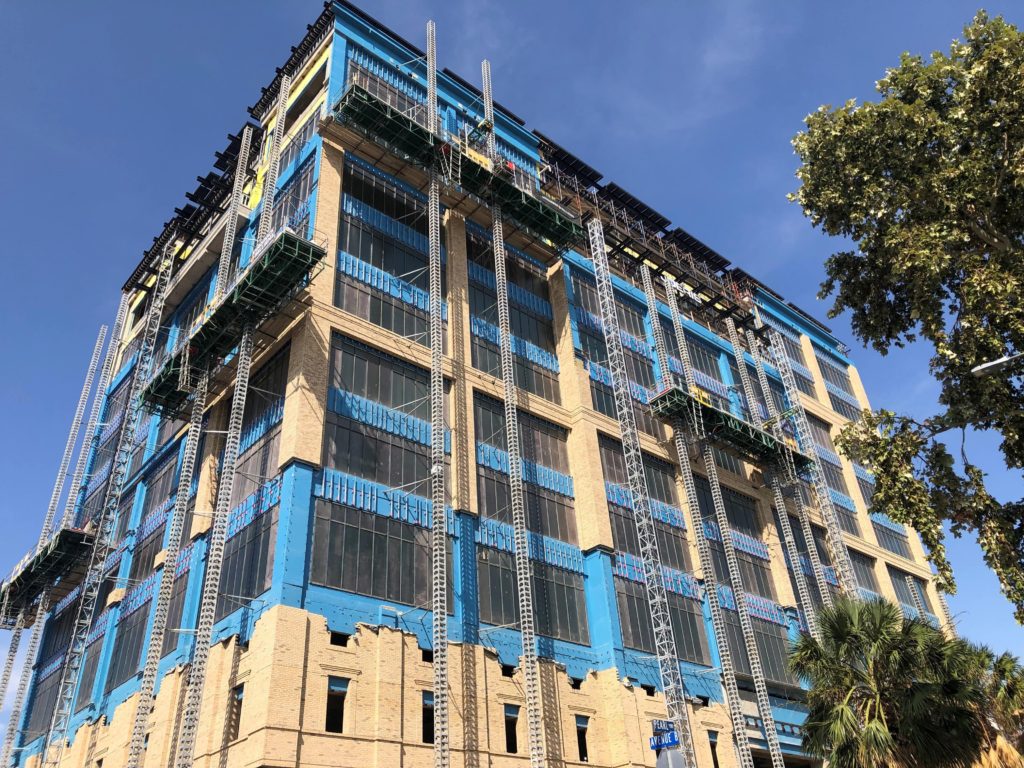Words and Photos: Elizabeth “Liz” Graves, Spec Rents LLC
I’ve been selling and renting scaffolds and other equipment to mason contractors for years. On my visits, customers often talk to me about their challenges. Many of their challenges are the same from one customer to another, but two challenges stand out across the board. Can you guess what they are?
If you’re reading this, chances are, they’re likely two of your biggest challenges too:
Workforce and Productivity
Many of the leaders in masonry that I look up to across the industry talk about the good ol’ days when production was through the roof compared to what we’re getting today. Today, contractors also have trouble recruiting people into the trade and then retaining them on their teams. What has caused this?
That’s really a loaded question, and I think we all agree there’s a lot of that goes into the downward trend of production and lack of manpower. I choose to look at these as opportunities because most contractors have an opportunity to improve a lot of workforce and productivity challenges with the right equipment. There are a lot of different types of equipment out there that can help with increasing production and workforce, but today we will focus specifically on how choosing the right type of scaffold can help.
How the Right Scaffold Helps with Workforce and Production
1. Scaffolds Can Reduce Install and Dismantle Time
Frames take much longer with more scaffold installers to erect and dismantle the same amount of mast climbers like HydroMobile. Setting up a crank-up scaffold, like Non-Stop Scaffold or EZ Scaffold, is not as fast to erect and dismantle as mast climbers, but either of these options is still going to save you labor on installation and dismantle over frames.
I am not saying you will ever get rid of the need for conventional frames, but there are more and more options out there for mast climbers and crank scaffolds for difficult areas. We see more contractors starting to use scaffolds such as the HydroMobile P Series units that fit through a 36” door and can be put on casters to use on interior work. Lighter-weight mast climbers like these also work great on roofs and tight places that regular mast climbers do not work as well. Talk to your local scaffold expert to help you think outside the box and eliminate frames where you can.
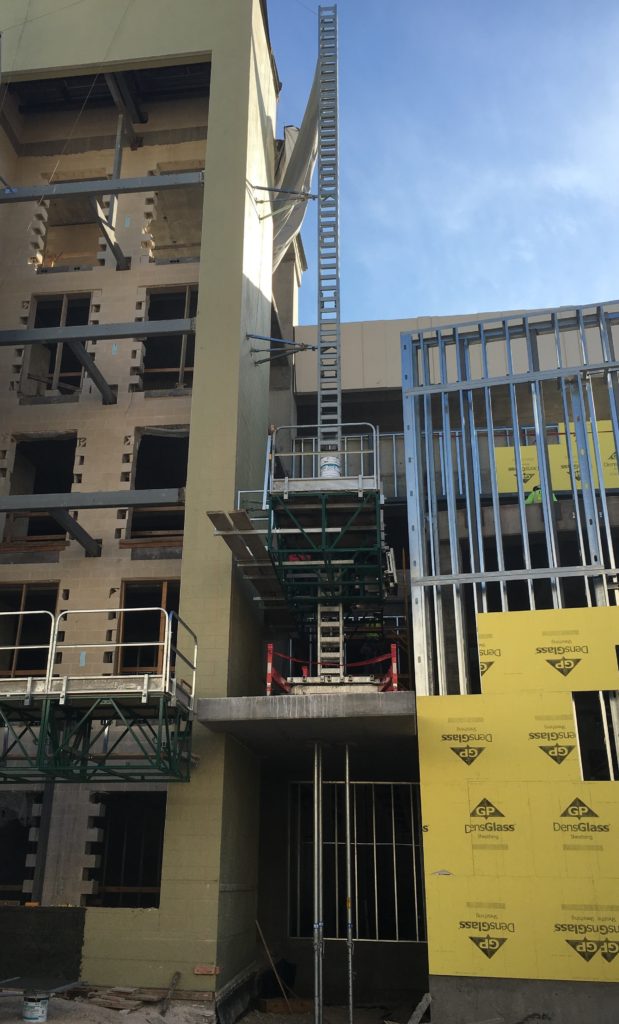
2. Choose Scaffold with Functional Decks
Using mast climbers can reduce the number of mason tenders needed because of the larger, solid decks. For example, the HydroMobile M2 units have a 7’-wide deck that gives tenders both the capacity to fully stock it with materials and equipment while still managing to have plenty of room to move around it all. The M2 unit boasts a capacity of 22,000 lbs each unit. That makes this mast climber large and sturdy enough with room to put a port-a-can, the saw, toolbox, and almost everything they need throughout the day, which saves your crews from going up and down throughout the day. We joke about having “everything up there but the kitchen sink,” but during the pandemic, I did have a customer that even put a camping sink up there when they couldn’t get hand sanitizer for their crews.
Solid decks vs. overlapping walk-boards make mast climbers like those from HydroMobile easier and safer for your crew. That may not seem like a big deal but think of the last time you pushed a mud tub full of mortar or a brick cart around. It is much easier to move around without rolling over things. Your laborers will thank you. Solid decks also reduce trip hazards- it won’t completely eliminate the hazards because bearing bridges still have overlaps, but it certainly will help reduce the risk.
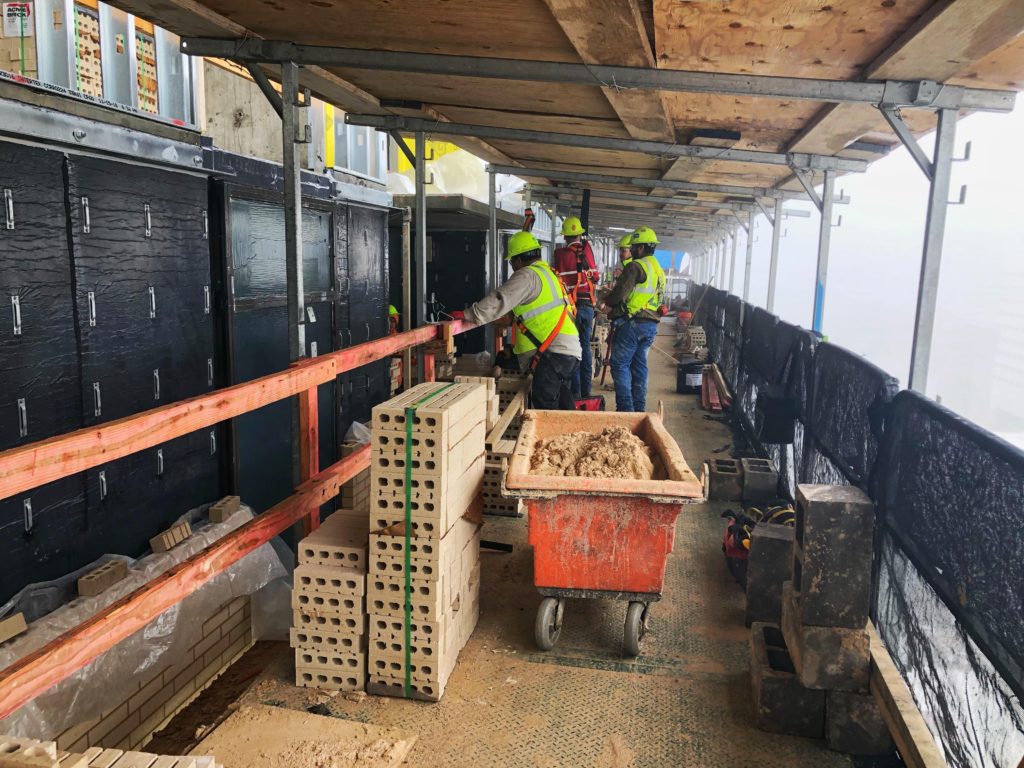
Think about how much time it takes every time someone climbs up and down the scaffold. Many contractors tell me they lose as much as 30 minutes each time someone gets off the scaffold, whether it’s to go get tools or make a trip to the port-a-can. Whether it’s a laborer or a mason, you’re losing production two-fold: 1) they aren’t on the wall or tending, and 2) climbing expends unnecessary energy that they could use for production.
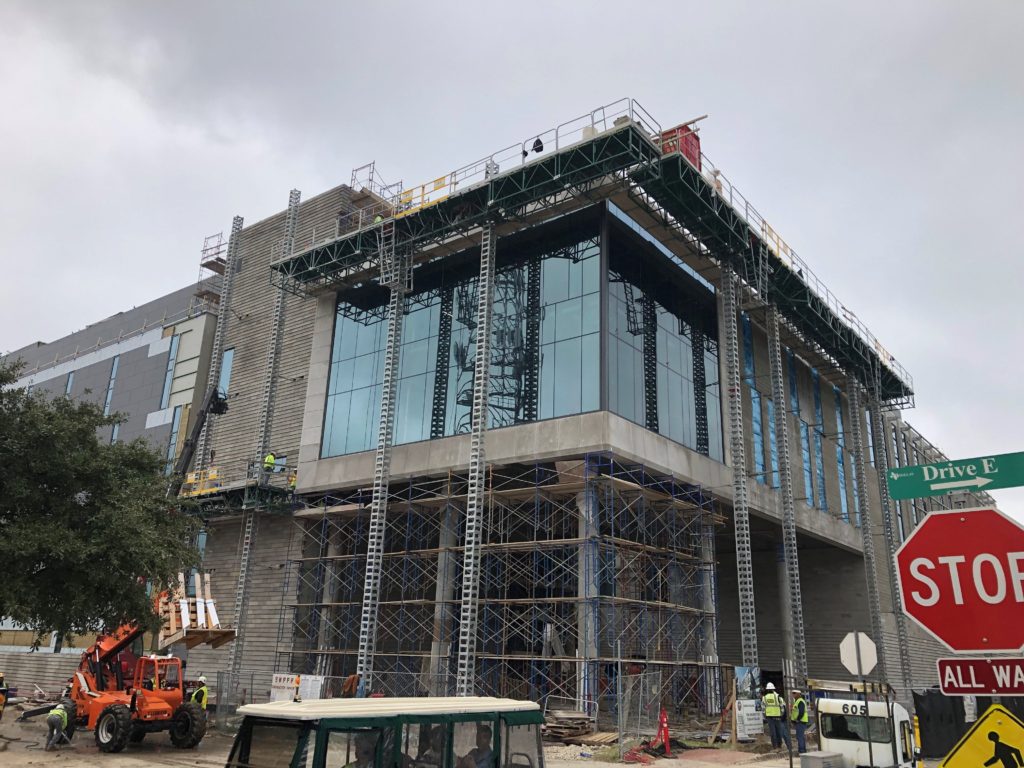
The more walk-boards you use, the more time and risk there is to your team. Many contractors are now requiring all levels of scaffold to be decked, which adds to both the time and greatly increases the cost as walk-boards have increased in cost substantially over the past couple of years.
3. Reduce Obstacles by Eliminating X-Braces
Not having to work around frames and x-braces is another way to reduce the ratio of tenders to masons with mast climbers. Using bearing bridges with cranks from EZ Scaffold or Non-Stop helps cut out more of these x-braces that get in the way as well. When using a grout pump or a Grout Hog, grouting becomes much easier when there are not as many uprights and x-braces in the way.
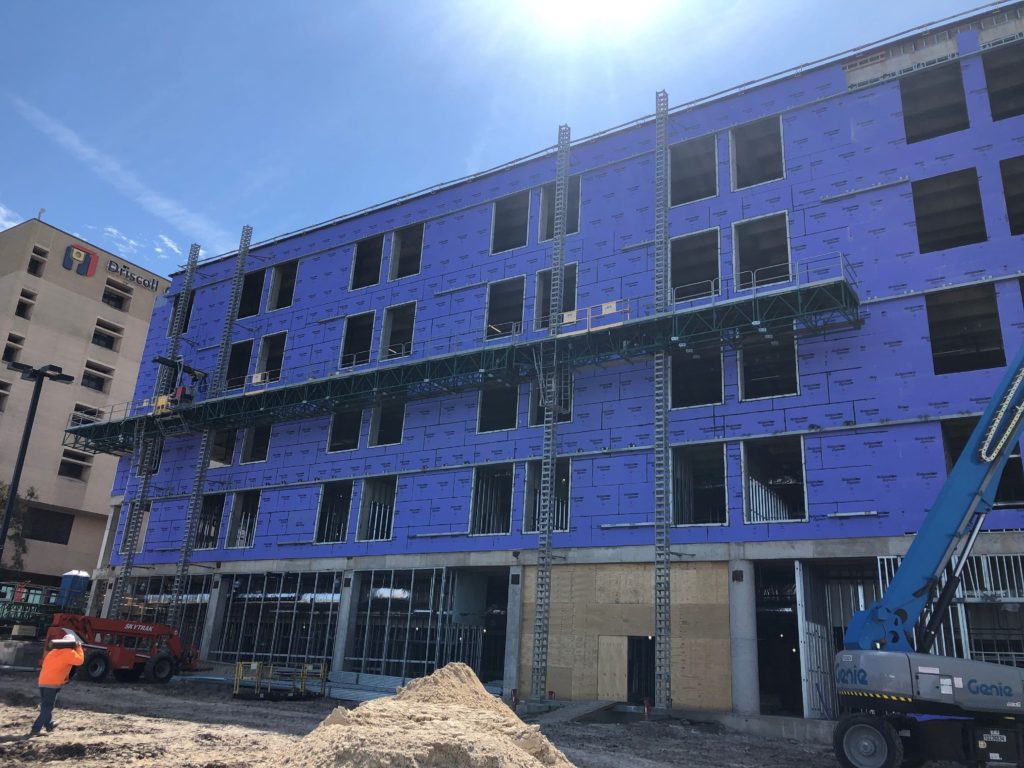
4. Keep Your Workforce Happier and Safer
Just the other day, I had a mason complain to me because they were using frame scaffold and were short on helpers. He was having to stock himself and raise his own boards. I’ve had multiple masons say they like working with certain foremen in their company because they make sure they always have mast climbers on their jobs.
We don’t hear about worker satisfaction as much in our industry, and we haven’t historically been good about taking that into consideration. However, things are changing, and with the constant struggle to keep good folks on our teams, we need to put more effort into the wants and needs of our masonry workforce. It might be time to heed the saying: “Happy workers are productive workers.”
5. Don’t Wait for Raising Boards
Remember above when I told you about the mason complaining about raising his own boards and tending for himself. What’s NOT happening when the boards are being raised? That mason is not laying any material! You’re likely not making a dime if your masons aren’t putting materials in the wall. Both mast climbers and crank-up scaffolds save you manpower by not needing extra helpers to raise the boards and all the materials when the masons move to the deck above. On long walls of a scaffold, labor savings can be gained by using mast climbers over crank scaffolds because of all the constant cranking to maintain the right height. However, using bearing bridges with EZ Scaffold or Non-Stop will help cut down on the amount of cranking required but not eliminate it.

6. Don’t Bend or Stoop to Lay Materials and Reduce Amount of Heavy Lifting
That same mason from above is also laying less materials on the frame scaffold because he is either bending down or reaching except for a small window of time when those side arm brackets are positioned right. Take a minute to think of your teams. How long do you want them to stay in the workforce? All that repetitive bending, stooping, and reaching with heavy materials throughout the days can cause masons to slow down throughout the day but also reduces the number of years they stay on the wall. We need to keep those seasoned masons in the industry so we can mentor the generations to come.

Heavy materials are often part of a mason’s job description, but projects that require large amounts of heavy materials, such as large stone, cast stone, or larger custom CMU, can be a major challenge that slows production. Sometimes this can be improved through equipment. When setting heavy materials, being at the right height is important to prevent injuries. Monorail systems can also really improve both productivity and safety. They can be used with whichever scaffold system you are using. However, they are easier to use with crank scaffolds and mast climbers because there is no jumping or pre-installation of the monorail required. Another option that can be used to reduce lifting strain but absolutely must be pre-planned is using the Mule from Construction Robotics as a lift assist. We will not go into that here, but it may be worth exploring, and what scaffold you are using will be an important consideration with using it effectively.
7. Keep Masons Constantly Stocked with Materials:
If you have no way to feed your scaffold besides manually moving materials, your labor goes up, and production will go down. There will be jobs when you have outreached your forklift, or you are in too tight of an area that you cannot get a forklift in. Here in Texas, we have had a lot of slabs that general contractors/engineers are not letting contractors even get a warehouse forklift on. When this happens, it can be difficult to constantly keep the masons stocked with materials.
Most masons want to lay materials, and it becomes frustrating to them and their tenders when they cannot keep working. But, unlike the mason I described above that would stock himself, there are, unfortunately, also masons that may not do anything but take a break when they run out of materials. Luckily, almost any type of scaffold can be fitted with a material hoist. A material hoist like the HydroMobile M2 hoist has a capacity of 4,000 lbs and a speed of 65’/minute, which is optimal for keeping things going. A hoist like one from Beta Max can be put on frames, crank scaffolds, or even smaller mast climbers with the right bracket systems. Because they have a smaller capacity, they require you to break pallets of materials down, and electricity becomes an issue since that has become harder to come by on today’s construction sites, but this certainly is a better option than having masons hanging out with nothing to lay. Preplanning to include a hoist is important for it to be used effectively, so be sure to look at this ahead of time. Helping your supervisor look at how they will feed the scaffold ahead of time on special projects will prevent delays.
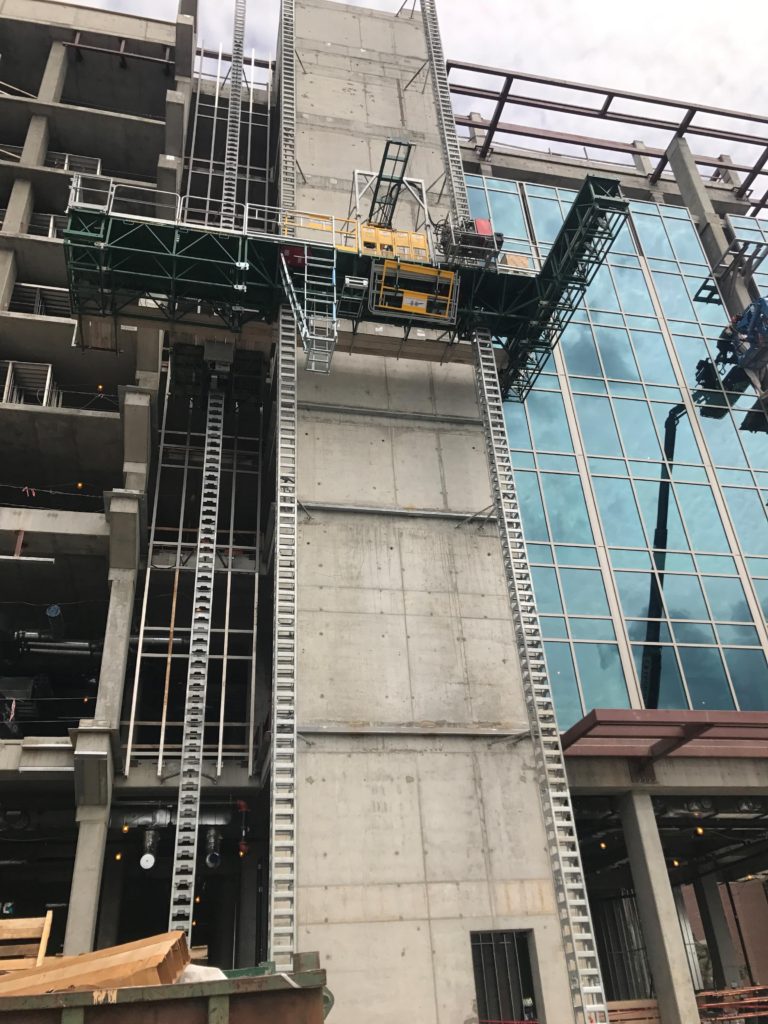
Pre-plan to Put it All Together
No matter what type of job you’re doing or what kind of scaffold you’ll be using, pre-planning will help your team to be more successful. All the above considerations will help you to pre-plan your next project for using the right type of scaffold for your jobs. The quote that says, “Failing to plan is planning to fail,” is incredibly true when it comes to scaffolding your projects. You have the opportunity to make your scaffold work for you, not the other way around. If you do this, your scaffold will help you increase your productivity and workforce problems.
